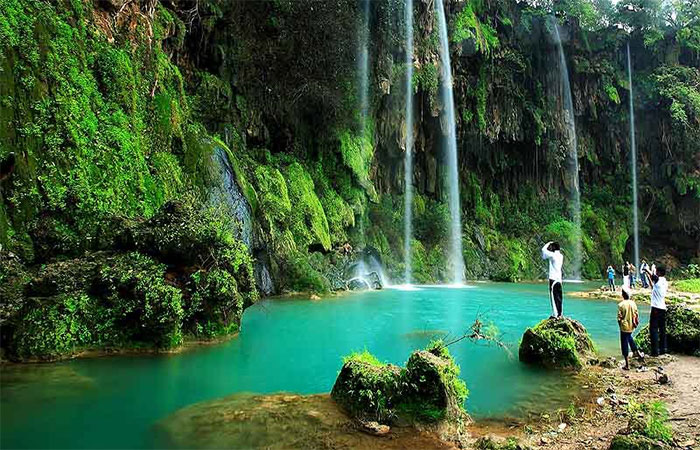
Location: 17.113222, 54.364951
The Ain Athum spring is an interesting place, which can be reached on the eastern side of Dhofar. So many camels live here at times that one should drive carefully because the animals like to run on the street and the dense shrub vegetation makes it difficult to see them. A footpath leads from the parking lot to a huge rock overhang with rounded stalactites, from which a waterfall falls into the pond during the Monsoon season. The place is a paradise for birds.
Location: 17.106476, 54.074519
The access to this charming spring area close to the city is 3 km long. The extensive picnic area is very popular during the monsoon season, while the rest of the year visitors enjoy a peaceful tranquility. There are numerous concrete tables and benches for visitors under tall shady trees and inside cave-shaped rocks. The spring water ripples through the canals and many birds can be seen everywhere. One can drive further from the spring into the tree-covered wadi.
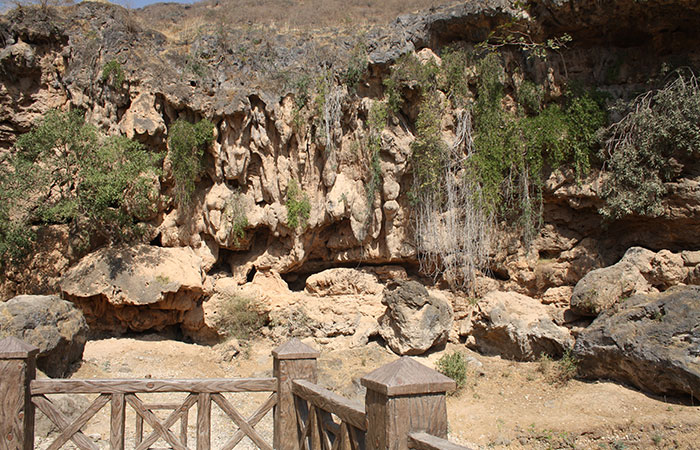

Location: 17.097623, 54.281204
Ayn Hamran is a natural water spring in south Oman. The site is located at the foot of the Qara Mountains. A plantation with flame-trees and a banyan fig tree embellish the driveway. Tall trees provide shade and a habitat for many species of birds. Ain Hamran is not only known as a source of fresh water, but also for historians and archaeologists: around 1 km from the spring, there are unremarkable ruins of an ancient site dating back to 450 BC. Ain Hamran has yet another sensation to offer: Dr. Zarin, a famous archaeologist excavated in 1992/1993 a so-called “red spring” from Ayn Hamran ruins, a presumably pre-Islamic Christian communion goblet, which leaves room for speculations.
Location: 17.130060, 54.237703
The year-round water-bearing spring area is located on the eastern side of Salalah. The water from the many individual springs that drain the porous limestone is collected in a basin and passed through a man-made 17 km long Falaj Canal. Numerous picnic areas spread out under tall trees along the canal and the surrounding oasis. Stone steps lead up to a round cave in the steep wall.


Location: 17.148133, 54.178220
Ayn Sahalnoot (also Ain Sohanawt) is located a few kilometers from Salalah further north, at the foot of the mountains. There is a parking lot in front of the narrow rock gorge, but one can also drive into the narrow gorge. Beautiful rock formations can be seen there and there are numerous picnic benches along the route. At the end of the route a beautiful, deep swimming pool can be seen, which is very shady and atmospheric. Bird lovers can discover the rare mountain stilts (Motacilla cinerea) here.
Location: 23.375491, 57.828335
Nakhal and Rustaq is an area of healing warm springs, the most notable being Ayn Thawarah. Its waters runs at 45 °C (113 °F) and are regarded as a cure for rheumatism and skin diseases due to its sulphur content.
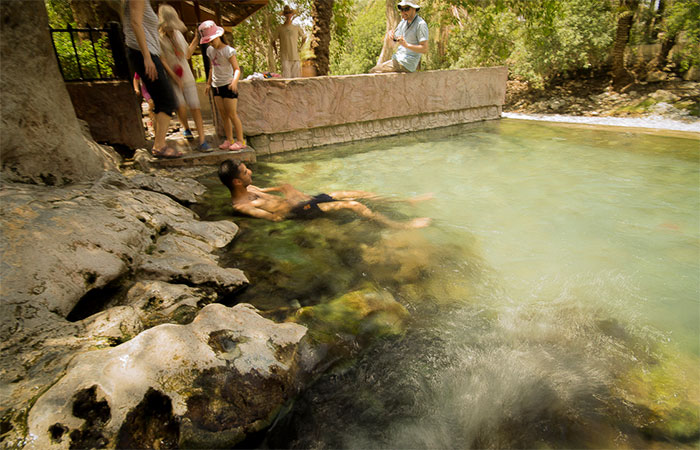
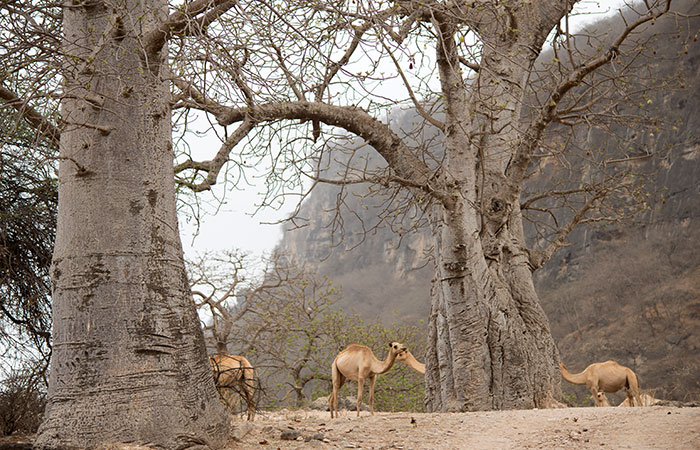
Location: 17.053484, 54.609242
In the narrow coastal plains of Dhofar region under the influence of the monsoons, a particular tree thrives, that otherwise only be present in less hotter savanna regions of Africa and would not survive anywhere else in Arabia; the baobab (Adansonia digitata). The eye-catching representative from the family of the cotton tree remains leafless for most of the time, which is characteristic to its appearance. It forms large, white flowers that only bloom for about two days, and oval, velvety fruits that contain an extremely high amount of vitamin C. These baobab trees can only be seen scattered in certain patches of the Dhofar Mountains.
Oman is a gem for ornithologists. Although Oman is filled with mostly desert environment, bird lovers have the unique opportunity to observe species from three continents at the same time. There is such an abundance of interesting species in a wide variety of terrain that even beginners in the field of ornithology quickly develop enthusiasm. The species present also differ depending on the season. Migratory birds during their seasonal journey between their nesting habitats and the places where they spend winters can be seen from February to May and between August and November. Winter guests generally stay in Dhofar between December and March, and summer migrants during the monsoons from June to September. The avifauna of Oman include a total of 494 species, of which five have been introduced by humans and 146 are rare or accidental.
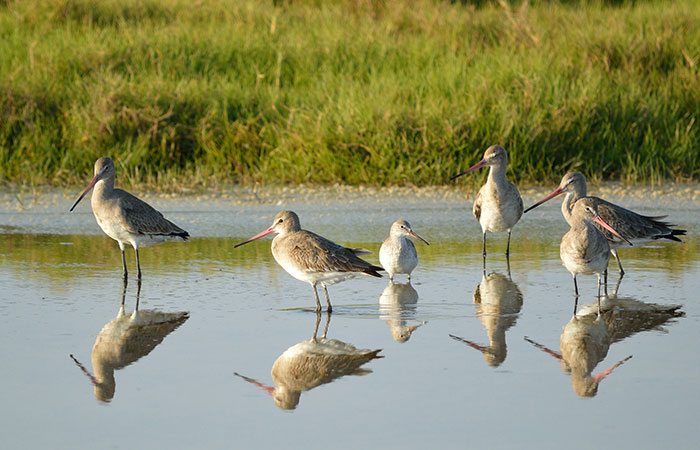
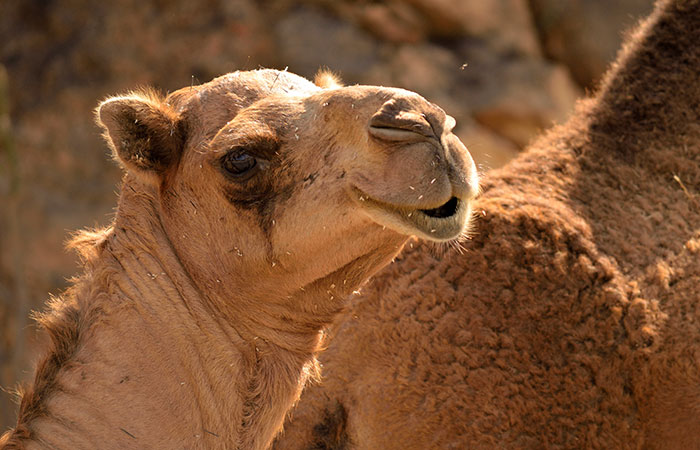
Camels, the “ships of the desert,” have played a vital role in the region over thousands of years. Camels have influenced all aspects of daily desert life. Besides being a means of travel, food and shelter, camels are also used for entertaining, celebrating and competing in festivals and special events. The relationship between the Omanis and camels is deep rooted. Oman is one of among the Gulf countries that accords special status to camels. Camel race is a local sport eagerly followed by the public and its raising is seen as a sign of pride as it is linked to the Omani citizens since ancient times. The most important of which are the annual camel race in the Governorate of Dhofar and in the Governorates of Al Batinah, A’Sharqiyah, A’Dhahirah and A’Dakhiliyah.
Oman coast is a year-round home to 21 different species of whales and dolphins and a dolphin watching tour is your ticket to viewing them in their entire natural splendor. One of the most memorable activities you will take part in while visiting Oman. Share the thrill of meeting dolphins in the wild and experience the unique bond and kinship they inspire in humankind. Get to watch dolphins up close. Watch them in their natural habitat as they feed and play. Indian Ocean Dolphins, the Indo-Pacific Humpback Dolphins, Risso’s Dolphins, Common Bottlenose Dolphins, Indo-Pacific Bottlenose Dolphins, Rough-toothed Dolphins, Pantropical Spotted Dolphins, Striped Dolphins, Spinner Dolphins, or Long-Beaked Common Dolphins are the known species you can spot in Oman waters.
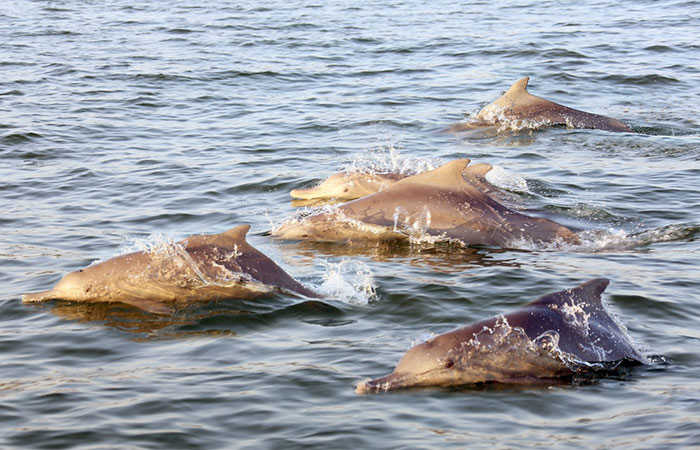
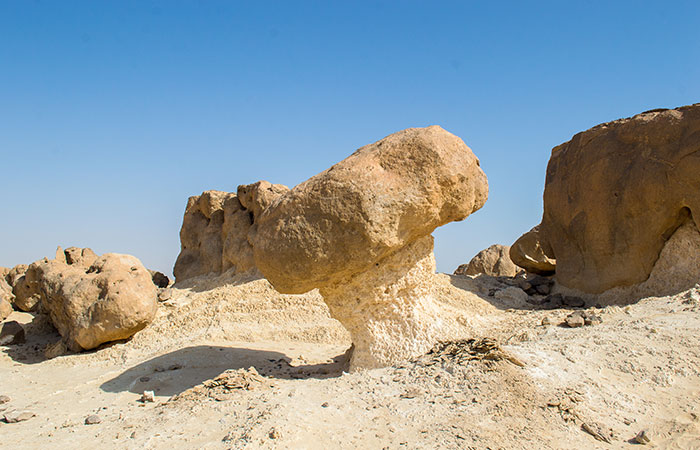
Location: 19.652940, 57.656251
Duqm rock garden is one of the rare natural touristic destinations located in Wusta, about 500km from Muscat. The 3km2 large rock garden is a unique area of geological importance which is characterized by formations and stunning rock sculptures of limestone rocks carved from water and wind over millions of years. The site is now internationally acknowledged as one of the world’s rare natural rock gardens, becoming one of the top 25 sites of geological and scientific importance in Oman. The garden attracts tourists, geologists and researchers since recently due to its unique and distinctive rock formations.
Location: 19.945668, 57.102515
Opening hours: Sat – Fri 07:00 – 12:00 & 17:00 – 18:00
The Arabian Oryx Sanctuary is an animal sanctuary in the Omani Central Desert and Coastal Hills, it contains rare fauna, including a free-ranging herd of Arabian Oryx, the first since the species’ extinction in the wild in 1972, and its subsequent reintroduction in 1982 at this site.
The endangered houbara bustard breeds in the wild only at sites within the sanctuary. Other species found here include the largest wild population of the endangered Arabian gazelle, as well as Nubian ibex, Arabian wolves, honey badgers, and caracals.
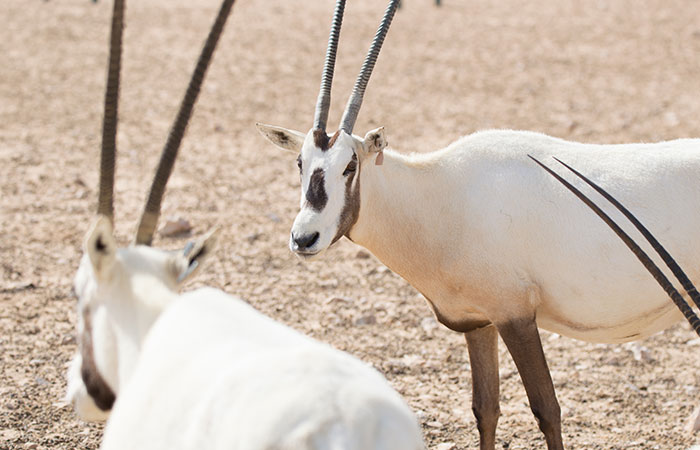
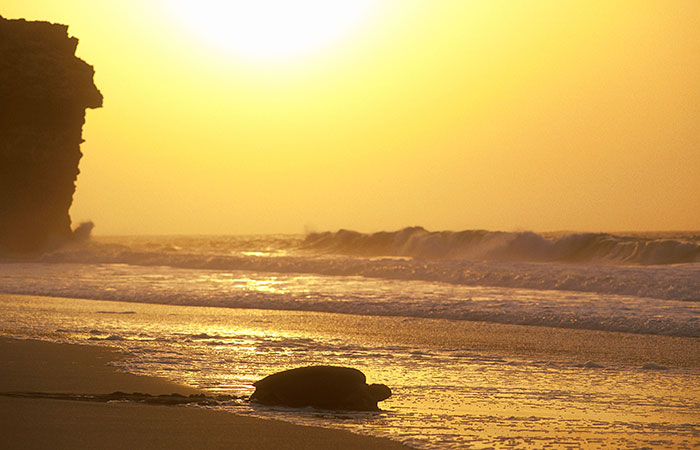
Location: 22.426426, 59.826822
Oman is home to several important nesting sites for four different species of turtle: the endangered Green Turtle, the Olive Ridley Turtle, the Loggerhead Turtle, and the critically endangered Hawksbill Turtle. Oman has several nesting areas for these species; predominantly in Ras Al Hadd, Ras Al Jinz, Masirah islands, shores of Dhofar and Daymaniyat Island.
Please Note: Our turtle watching tours are very limited, due to our concern towards the environmental protection of nesting grounds of Oman.
Location: 16.863820, 53.720215
Wadi afoul is located around 45 km west from Salalah and stretches across the famous hairpin bend road after Mughsail. The wadi stays dry most of the time during the year and offers perfect conditions to explore the nature with trekking. The trekking path is easy to moderate and takes around one hour to bring you to a pristine hidden beach (Masood beach) at a bay at the end of the trek.
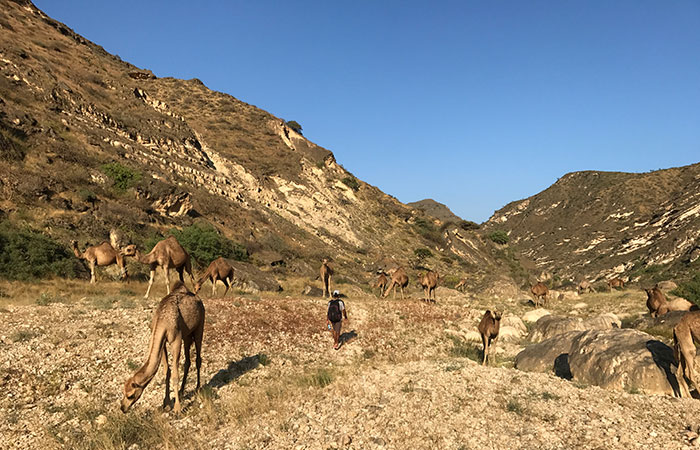

Location: 17.246400, 53.888450
Wadi Ayun is famous for its rock pools with deep blue water surrounded by sedges. The wadi is located in South Oman. Wadi Ayun is only accessible by a 4×4 vehicle. Climbing down into the wadi requires some climbing skills, as there is no recognizable path through the steep rock. The pools, which according to the belief also feed the groundwater of the Ubar / Shishr oasis, look most beautiful in the morning light.
Location: 23.24059, 57.43701
Wadi Bani Awf is located in the South Batinah Governorate of Oman. Drive to this wadi offers many attractions along the way including the famous snake canyon and the scenic village of Balad Sayt. Wadi Bani Awf offers some of the best off-road driving experiences in Oman; beautiful landscapes with stunning cliffs and canyons around.
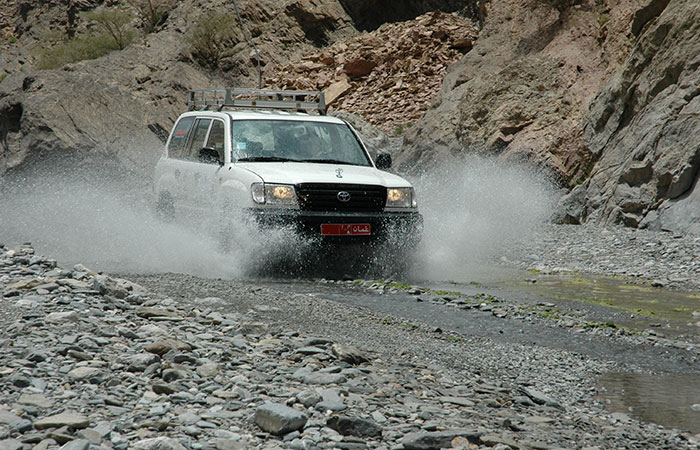

Location: 22.615563, 59.093845
Wadi Bani Khalid is one of the best-known wadis in the Sultanate of Oman. Its stream maintains a constant flow of water throughout the year. Large pools of water and boulders are scattered along the course of the wadi. As a geographical area, the wadi covers a large swathe of lowland and the Hajar Mountains. Wadi Bani Khalid is ideal for those who wants a bit of a hike and a swim in Oman.
Location: 23.085103, 58.848092
Wadi Dayqah dam is spectacular site located in the Sharqiyah region. Wadi Dayqah flows from Wadi Dima wa Tayyin, through the Eastern Hajar Mountains and on to the coast just south of Quriyat at Daghmar. Wadi Dayqah Dam is one of the largest on the Arabian Peninsula and a source of irrigation and protection for the surrounding villages. The dam has reduced flooding, increased the supply of irrigation water and acts as a buffer water supply for Muscat. The stunning views of the surrounding area make this place as one of Muscat’s most popular leisure destinations during holiday periods.
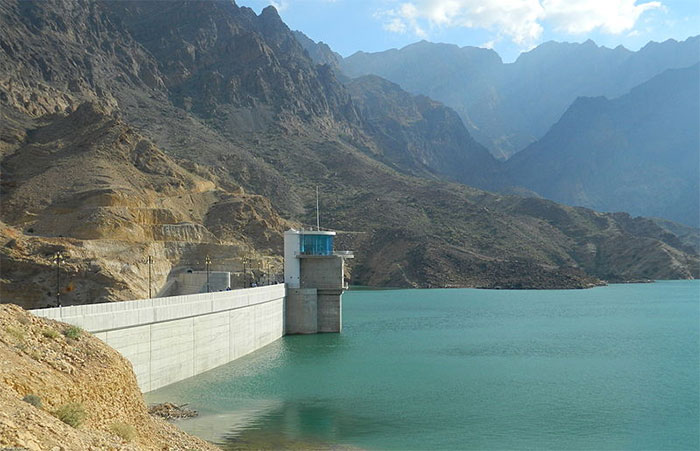
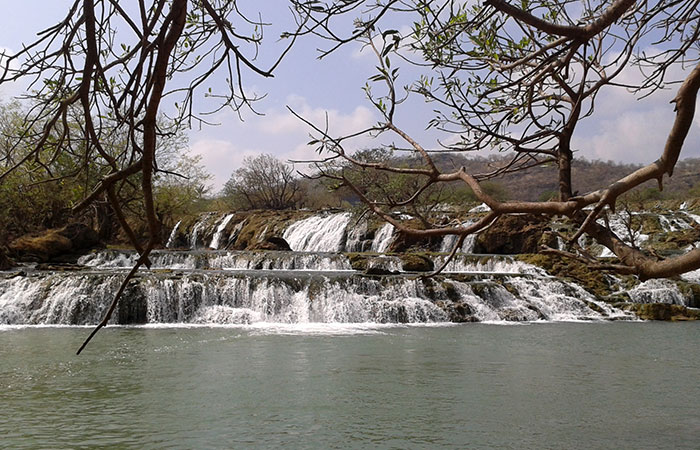
Location: 17.104808, 54.452751
Located in the eastern side of Salalah, Wadi Darbat is the most beautiful Wadi, surrounded by high mountains, which narrow to a gorge to create the Wadi. What immediately catches the eye is the dense vegetation covers the entire valley, and the wadi holds water all year round. In the monsoons, it becomes tropical; wet meadows form, Waterfowls, migratory birds roam in the lakes and pools. After all, so much water accumulates here that Arabia’s largest waterfall forms and plunges from the upper Wadi edge in several cascades up to 30 m high, a total of 170 m deep. In the winter months, however, Wadi Darbat is more like a dreamy African savannah with full of acacias in the tall yellow grass. Only the many camels don’t really fit the African cliché.
Location: 22.839426, 59.246570
You will encounter Wadi Shab while driving along the coastal road from Muscat to Sur. Wadi Shab has its own charm, beautiful sceneries and is one of the most rewarding attractions in Oman with a short boat ride and plenty of hiking. Along the hiking trail, there are refreshing pools to swim and the wadi is one of the most popular day outing place among the locals.


Location: 17.932245, 55.527384
The 20 km long Wadi Shuwaymiah boasts a breathtaking and dramatic beauty. It is located around 300 km from Salalah on the coastal road to Duqm. The initially wide wadi narrows more and more, and the limestone cliffs soon rise higher and higher into an impressive canyon. After 10 km a real palm oasis nestles on the steep mountain slope. There is an idyllic pond surrounded by tall reeds, where you can also swim. Different rock formations including Stalactites, fossils found in the wadi rocks, lovely vegetation with palm trees, grasses and flowering shrubs spread around the wadi bed makes the place more attractive to the tourists. In this spectacular, quiet natural setting, you can camp wonderfully and maybe even discover the greenish-colored Waaliataove (Treron waalia), which only sited in a few places outside Dhofar in Arabia.
Location: 22.810755, 59.251307
Wadi Tiwi is located in Al Sharqiyah region, adjacent to the very popular Wadi Shab. Wadi Tiwi is named after the Tiwi village at the coast and it has unique landscapes with lush green plantations and several pools making it as a beautiful wadi to visit. Mibam village is lying inside the wadi and it is a famous hiking area for tourists.

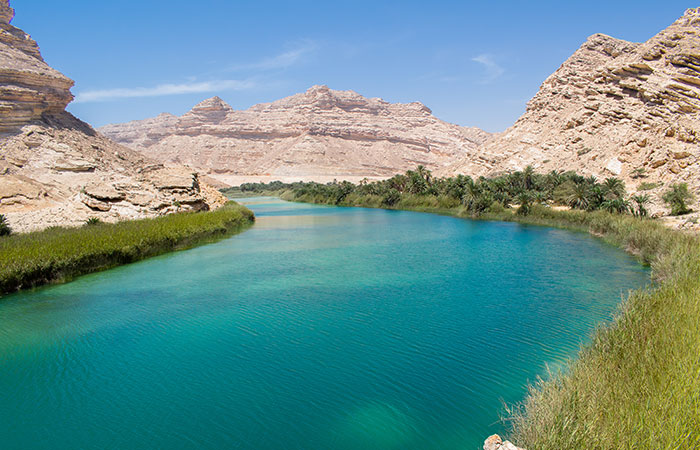
Location: 17.601748, 55.255984
Wadi Zanaq (Khor Sanaq) is located in southern Oman, around 200km away from Salalah. Due to its remote location, the place was only popular among the locals and is a well-kept secret of the natural beauty of south Oman. Lying adjacent to a bay at the beach, Khor Sanaq offers stunning views of the surrounding with deep turquoise water pools, date palms and mountain cliffs around it.